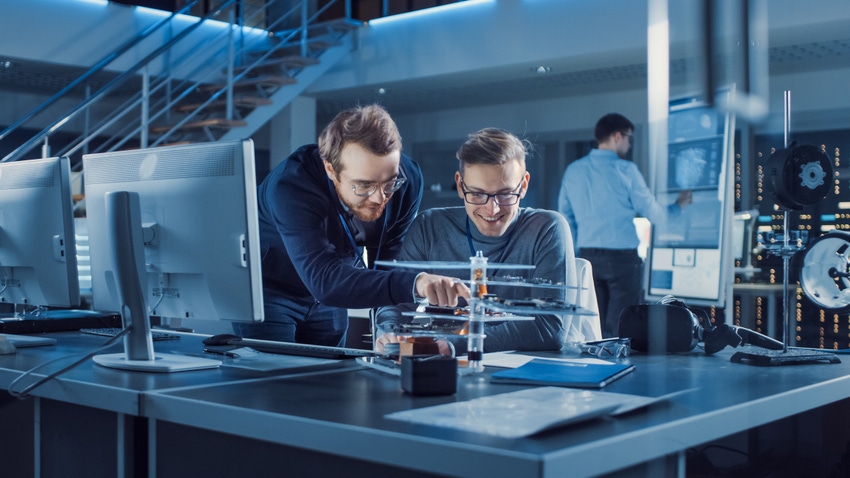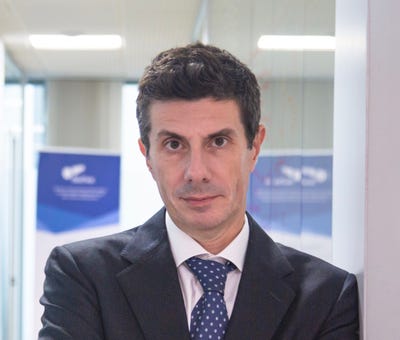Finding the Perfect Environment for Product Innovation
Increasingly, engineers and product designers need to look to other sectors and ‘distant competencies’ to find complex, even radical solutions to design challenges.

Innovation is no longer necessarily about who gets to a solution first. Rather, it is about who can develop something by crossing sectors and boundaries, such as integrating electronics and AI, for example, from one sector to create a solution to a design challenge in another. If a company tries to do that on its own, it can take it way out of its comfort zone, demand resources it doesn’t have, and take years. Open innovation, though, has made it possible.
Often companies don’t have the lab facilities or expertise in-house to progress their ideas quickly. Product design labs can serve to directly support all aspects of the product development process, from state-of-the-art prototyping and testing to drive projects forward. This access to multidisciplinary competencies can enable solutions to even the most-complex problems. The process is about bringing the conceptual, virtual, and real worlds together to create a perfect environment for product innovation and develop market-leading products faster than the competition.
This is important because the challenges companies face when creating new products are changing. Twenty years ago, finding a solution to a specific problem was a challenge. It wasn’t as systematic as it can be today.
Look Outside Your Comfort Zone for Design & Engineering Solutions
I always quote the example of Procter and Gamble, which, some years ago, wanted to find a way to ‘print’ an image onto their Pringles crisps. After trying internally to find a solution without success, they opened their own innovation office with one technology scout for each of the major markets. In Bologna, they found a pastry shop that had printed small drawings onto the top of its cakes and were able to adapt the equipment the bakery had used for their own requirements. Today, it would be a much simpler process. Someone from the purchasing department would be able to conduct a simple search and find plenty of technologies available to meet their needs. Access today is different.
So, if innovation challenges today are comparatively simpler to solve, what kind of innovation challenges may require an independent specialist? Those that are more complex in nature; not incremental but requiring radical innovation and those that require an exploration of distant competencies to find appropriate solutions.
For example, take a company that produces soles for sports shoes. They have tens of experts within the company, experts on materials, and an internal lab capable of prototyping any design of sole. But they want to integrate sensors into the soles of their trainers. That means introducing traditionally rigid electronics into the flexible, elastic world of trainers. Is it possible to bring the two together?
The answer is yes.
Product development specialists have a crucial role to play in helping businesses find appropriate technological solutions and integrate them into their own projects. The shared experience that they can bring to the table and the tech partners that they can find can streamline the process.
Innovation is no longer about who got to it first. It’s now about who can develop a solution by crossing sectors and boundaries; about who can come out of their comfort zone and work with others from different sectors to effect change. To try and do that in isolation could take years; to do it as part of an open innovation process reduces time, reduces cost, and increases the chance for successful outcomes. The focus must remain on selecting the technology that meets the KPIs, whether those are around cost reduction, performance improvements, or sustainability.
Keep Up With Tech Trends
In the automotive industry, for example, AI will likely be impacting operational efficiency, design methods, and ways of thinking, most of all. Trends like this don’t disappear—they become assimilated and part of the normal engineering way of life. The new normal.
This is especially important as trends push innovation. Digitisation is pushing companies to find smarter, more interactive technology able to provide data or ensure sustainability. In food manufacturing, this may be around lowering the carbon footprint of production plants; in luxury goods, it may involve testing product design; in packaging, about being more environmentally responsible; and, in automotive, a move from using recycled material to using recyclable material.
A “Safer” Approach to Radical Innovation
Innovation should neither be viewed from a purely narrow perspective of what your competitors are doing. By using technology scouting and open innovation for, for example, prototyping and testing, you can make innovation part of your organisation’s DNA.
The safety aspect of this is confidentiality. Companies are reticent because if they shout about their problems, the concern is that their competitors will hear. By using the innovation intermediary approach, confidentiality can be ensured because the client’s identity remains private to the innovation community that comes forward through the process to deliver solutions. It is a surgical approach to helping companies with their product design challenges but in a way which protects their intellectual property.
It is not the place of the intermediary to tell people how to create or complete their projects. As product development specialists, we know you will know your sectors better than we do. But we will know competencies that you will not. And that’s the route to ensuring something more dynamic and more intuitive than simply more of the same.
About the Author(s)
You May Also Like





